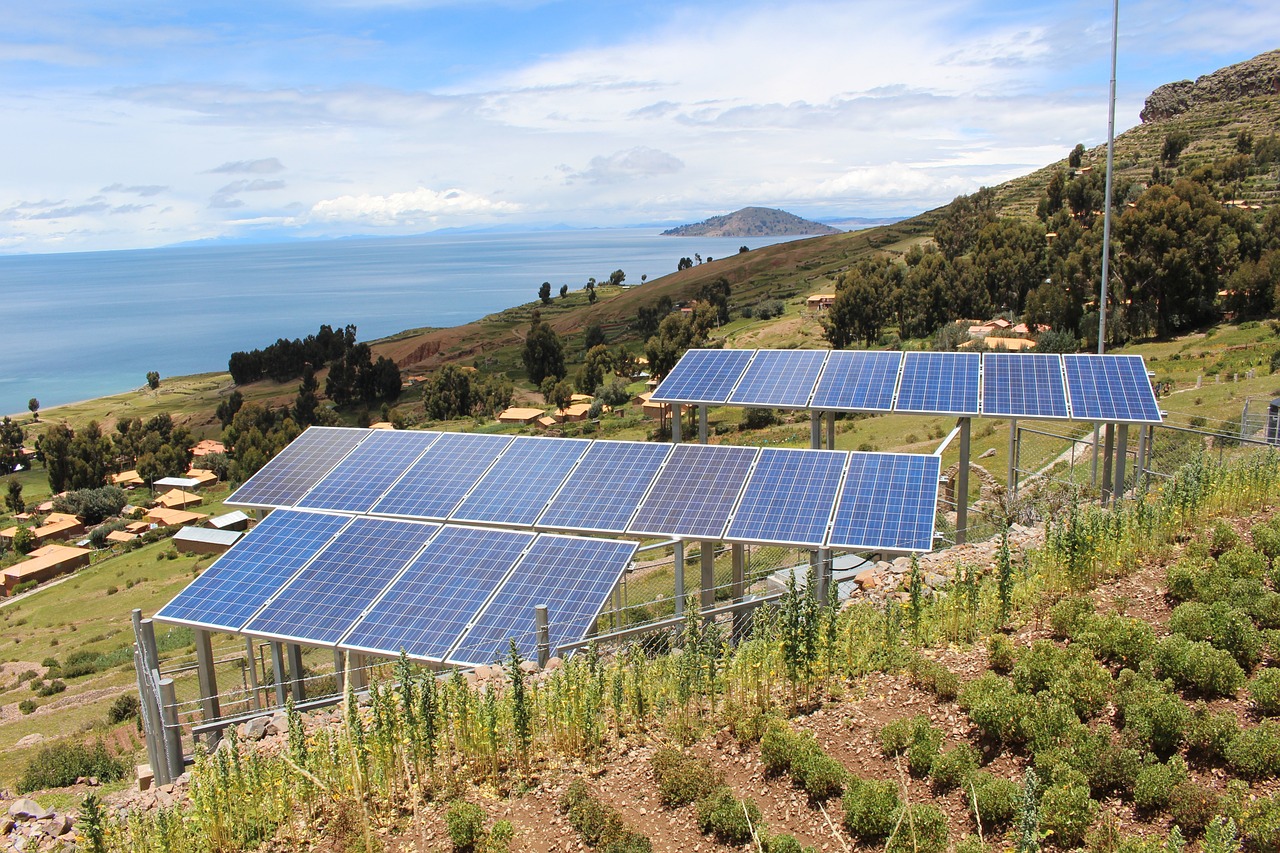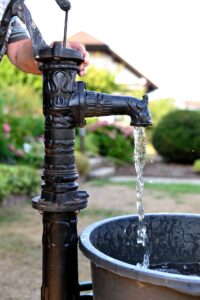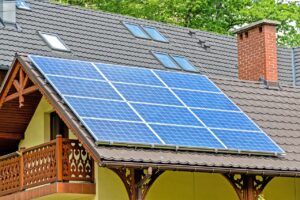Introduction
Greetings! Have you ever wondered how to get the most energy from the golden rays that grace our planet? Are you curious about what makes one solar panel more efficient than another? If so, you’ve come to the right place. Today, we’re embarking on a journey into the world of the most efficient solar panels. As we delve into this enlightening topic, we’ll explain the nuts and bolts of solar panel efficiency, the factors that influence it, and why it’s such an important consideration when choosing the most efficient solar panels. We’ll also shine a light on the types of solar panels that stand at the pinnacle of efficiency. So grab your sun hat, put on your sunglasses, and join us as we bask in the knowledge of solar energy. This isn’t just a technical guide—it’s an adventure into the heart of the sun’s power and how we can harness it most effectively.
The Importance of Solar Panel Efficiency
Before we step further into the light, let’s clarify what solar panel efficiency means. In the simplest terms, solar panel efficiency refers to how effectively a panel can convert sunlight into usable electricity. It’s kind of like a sun-powered alchemy, transforming golden rays into electric currents. If a panel boasts a 20% efficiency, it means it can transmute 20% of the received sunlight into electrical power. In other words, it’s squeezing out one-fifth of the potential energy from the sunlight hitting its surface. The higher the efficiency, the more sunlight we can transform into electricity, and the more power we have to light up our homes, charge our electric cars, and power our modern lives.
But why does this matter, you might ask? Imagine you’re on a sun-soaked beach. Would you rather have a tiny umbrella that barely casts a shadow or a large one that gives you plenty of shade? In this scenario, the umbrella is like your solar panel and the shade is the electricity it generates. The bigger the shade (or, the higher the panel efficiency), the more comfort (or power) you get. An efficient panel extracts more power from the same amount of sunlight, meaning you get more bang for your buck. This becomes crucial when space is limited or you want to maximize your energy production. The most efficient solar panels let you harvest more energy from the sun’s bountiful rays, helping you save money and reduce your carbon footprint. So, ready to dive deeper and discover which panels can help you achieve this? Let’s go!
Factors Influencing the Efficiency of Solar Panels
Solar panel efficiency isn’t set in stone—it’s influenced by a chorus of factors, each playing its own part in the symphony of solar power production. Let’s pull back the curtain on these key players:
Temperature
Here’s a fun fact: solar panels are a bit like humans; they love a sunny day but don’t do so well when it gets too hot. That’s right; high temperatures can actually decrease a solar panel’s efficiency. This is due to the physical properties of the semiconductors within the panels. As the temperature rises, the semiconductors get overly excited, and their increased activity leads to a drop in voltage and, consequently, efficiency. It’s a bit like trying to work on a scorching hot day without an air conditioner—you’re likely not going to be at your most productive.
Sunlight Angle and Intensity
Ever noticed how the sun feels stronger when it’s directly overhead compared to early morning or late afternoon? The same principle applies to solar panels. The angle and intensity of sunlight striking the panels significantly affect their efficiency. When the sun is directly overhead, the sunlight hits the panels at an optimal angle and with maximum intensity, leading to higher efficiency. This is why solar panels in sunny, equatorial regions often perform better than those in higher latitudes, where the sun sits lower in the sky. It’s also why some solar installations use tracking systems to follow the sun’s path and maximize exposure.
Shading
Shade is to solar panels what kryptonite is to Superman—it significantly weakens them. Even a small amount of shade on one part of a solar panel can drastically reduce its overall efficiency. This is because most panels comprise a series of interconnected cells. If one cell is shaded, it can affect the performance of the whole panel, much like a single bad bulb can cause an entire string of Christmas lights to go out. So, for optimal efficiency, it’s important to install your panels somewhere they’ll get unobstructed sunlight for most of the day.
Dirt and Debris
Over time, dust, pollen, bird droppings, and other debris can accumulate on your solar panels. This layer of grime can block sunlight from reaching the cells, reducing the panel’s efficiency. It’s like trying to look out of a dirty window—you won’t see much. Regular cleaning can help ensure your panels operate at peak performance.
Panel Degradation
Like most things in life, solar panels don’t stay young forever. Over time, they naturally degrade, and their efficiency drops. This is typically a slow process, with most panels guaranteed to maintain at least 80% of their initial efficiency after 25 years. But harsh conditions like extreme temperatures, heavy snow, or high winds can accelerate this degradation.
These factors show that achieving high efficiency with your solar panels isn’t just about choosing the right panels but also about installing and maintaining them properly. Whether it’s keeping them clean, positioning them to catch the most sun, or protecting them from harsh weather, there’s a lot you can do to keep your panels working at their best.
The Most Efficient Solar Panels: A Detailed Overview
When it comes to squeezing out the most energy from the sun’s rays, not all solar panels are created equal. Some panels are more adept at this energy transformation, boasting higher efficiency rates. In this section, we’ll take a closer look at the most efficient solar panels available in the market and what sets them apart.
Monocrystalline Solar Panels
If solar panels held a beauty contest, monocrystalline panels would likely take the crown. Their sleek, uniform black appearance makes them easy on the eyes. But they aren’t just good-looking—they’re also highly efficient. These panels are made from a single, pure crystal structure, which allows for a more direct path for electrons, reducing the chances of obstruction and increasing efficiency. Monocrystalline panels have an efficiency range of 17-22%, making them a top choice for those seeking the most efficient solar panels.
Polycrystalline Solar Panels
While not as efficient as their monocrystalline siblings, polycrystalline panels still deserve a mention. They’re made from multiple crystal structures, which give them a distinctive blue appearance. The multiple crystals create a sort of ‘electron obstacle course’, which can reduce efficiency. However, with 15-17% efficiencies, they’re still a good option, especially considering their lower cost.
Bifacial Solar Panels
Bifacial solar panels are the overachievers of the solar world. While most solar panels only absorb sunlight from one side, bifacial panels absorb it from both sides. They collect direct sunlight on the front side and reflected sunlight on the rear side. This two-faced (in a good way) approach can significantly boost their efficiency, reaching up to 30% under optimal conditions.
Thin-Film Solar Panels
While thin-film solar panels offer the lowest efficiency of the group (around 10-12%), they’re worth mentioning due to their potential for improvement. Recent advances in thin-film technology, especially in perovskite cells, suggest that they could reach much higher efficiencies in the future. Plus, their lightweight and flexible design makes them ideal for applications where traditional panels might not be suitable.
Concentrated PV Cells (CPV)
CPV panels are the heavyweights of solar efficiency. They use lenses or mirrors to concentrate sunlight onto small, high-efficiency cells. These systems can reach jaw-dropping efficiencies above 40%, but they come with a catch—they require direct sunlight and high-intensity exposure, making them suitable only for specific locations. They also need a tracking system to follow the sun’s movement.
Each of these solar panel types offers its own blend of efficiency, cost, and suitability for different conditions. The most efficient solar panels for your needs will depend on your specific situation, such as the amount of sunlight your location receives, your budget, and the amount of space you have available. Ultimately, it’s about finding the right balance between efficiency and other factors.
Boosting Solar Panel Efficiency
Want to squeeze more power out of your solar panels? Here are some ways to enhance the efficiency of your panels:
Regular Cleaning
Removing dust or bird droppings with a simple hose-down can improve panel efficiency by up to 3-5%. Depending on your location, you might need to clean them more or less frequently.
Proper Positioning
In the northern hemisphere, solar panels should face south, and vice versa in the southern hemisphere. Adjusting the tilt angle according to your latitude can optimize sunlight absorption and increase efficiency by up to 20%.
Cooling Systems
Implementing cooling systems such as solar panel cooling kits or thermally conductive materials can help dissipate heat and enhance panel performance. However, these can be costly and should be considered only if your panels are regularly exposed to high temperatures.
Efficiency vs. Cost: Striking a Balance
When choosing the most efficient solar panels, we have to address the elephant in the room—cost. Higher efficiency often comes with a higher price tag. But does that mean you should always opt for the most efficient (and usually the most expensive) panels? Not necessarily. It’s a bit like buying a car. Yes, a sports car might be faster, but if you’re mainly using it for city driving and the occasional highway trip, a compact car might serve you just as well at a fraction of the cost.
Understanding Price vs. Performance
When it comes to solar panels, the relationship between cost and performance isn’t linear. That means doubling the efficiency of a solar panel won’t necessarily double its cost, but it also means that the cheapest panel won’t necessarily offer the best value. For example, monocrystalline panels, which are among the most efficient, are also more expensive than their polycrystalline counterparts. But if your roof space is limited, choosing more efficient (and slightly more expensive) monocrystalline panels could be a wise investment.
Considering Your Specific Needs
The best balance between efficiency and cost depends largely on your specific needs and circumstances. If you live in a sunny area with ample roof space, lower-efficiency panels could be cost-effective over time, as you can simply install more of them to meet your energy needs. However, if your roof space is limited or you live in a less sunny area, investing in higher-efficiency panels can help you maximize your energy production.
Factoring in Installation and Operating Costs
The cost of solar panels isn’t just about the panels themselves. You also need to consider installation costs, which can be higher for more complex systems, and operating costs, which can include maintenance, repairs, and replacements. More efficient panels may have higher upfront costs, but they can also lead to lower operating costs over time. For example, they can generate more electricity from less sunlight, reducing your reliance on grid electricity and leading to lower energy bills.
Thinking Long-Term
When weighing efficiency against cost, it’s important to take a long-term view. Solar panels are a long-term investment, and their benefits are realized over many years. While more efficient panels may be more expensive upfront, they can generate more electricity over their lifetime, potentially offering greater savings in the long run.
In conclusion, striking a balance between efficiency and cost involves considering your energy needs, your available space, your local climate, and your budget. It’s about finding a solar solution that offers the best value for your specific situation, rather than simply opting for the most efficient or the cheapest option.
The future is bright for solar panel efficiency. Innovations like perovskites, multi-junction cells, solar tracking systems, and bifacial panels pave the way for even higher efficiencies. Stay tuned for exciting developments!
The Future of Solar Panel Efficiency
As we journey into the future, the landscape of solar panel efficiency looks promising and full of potential. Innovations are being made in laboratories around the world, and the efficiency frontier is being pushed further and further. Let’s dive into what the future might hold for solar panel efficiency.
Emerging Technologies
One of the most exciting areas of solar research is in new materials and designs. For instance, perovskite solar cells, which are thin, flexible, and can be made semi-transparent, have shown potential efficiencies of over 20%. Moreover, they can be combined with conventional silicon cells to form a “tandem cell,” potentially pushing efficiencies over 30%.
Solar Concentrators
Solar concentrators, which use mirrors or lenses to focus sunlight onto a small, high-efficiency cell, hold promise for pushing the efficiency envelope. While currently used in large-scale installations, future developments may make them practical for residential use.
Quantum Dots
Quantum dots are nanocrystals that can absorb different wavelengths of light, depending on their size. This makes them ideal for use in “rainbow” solar cells, which use layers of quantum dots to absorb different parts of the solar spectrum, potentially reaching efficiencies over 30%.
Solar Panel Longevity
Efficiency isn’t just about power output—it’s also about longevity. Research is being conducted to make solar panels that can maintain their efficiency over a longer period, reducing the rate of degradation. This would mean that solar panels can continue producing high levels of electricity for longer before needing to be replaced, enhancing their overall lifetime efficiency.
Improved Manufacturing Processes
While not as headline-grabbing as quantum dots or perovskites, improvements in the manufacturing process can also significantly boost efficiency. By reducing defects and impurities in solar cells, manufacturers can increase the amount of sunlight that gets converted into electricity.
While the path of innovation is never certain, these emerging technologies and improvements offer a glimpse into the potential future of solar panel efficiency. As scientists and engineers continue to push the boundaries, we can look forward to a time when solar panels are even more efficient, cost-effective, and widespread than they are today. The sun, after all, is the world’s most abundant source of energy, and harnessing its power more effectively is a bright idea that will shine on in the years to come.
Real-World Success Stories
There are many success stories worldwide where homeowners, businesses, and even cities have experienced the benefits of using the most efficient solar panels. These real-world examples provide valuable insights for anyone considering solar energy.
The Environmental Impact of Choosing Efficient Solar Panels
Opting for efficient solar panels saves you money and contributes to a healthier planet. By generating clean, green energy, you reduce reliance on fossil fuels and reduce greenhouse gas emissions. Every bit of efficiency counts towards a brighter future!
Conclusion
And there you have it—a comprehensive exploration of the most efficient solar panels. By now, you should be well versed in what solar panel efficiency is, how to improve it, and which types of panels offer the highest efficiency. The sun showers us with a powerful, abundant energy source every day. We can harness this resource effectively and sustainably by choosing the most efficient solar panels.
FAQs
Why is efficiency important when choosing solar panels?
The efficiency of a solar panel determines how much sunlight it can convert into electricity. More efficient panels generate more electricity from the same amount of sunlight, resulting in higher energy savings over time.
Which are the most efficient solar panels?
Monocrystalline and bifacial solar panels are among the most efficient, with efficiency rates reaching up to 20% and 30% respectively.
How can I improve the efficiency of my solar panels?
Efficiency can be improved by keeping your panels clean, positioning them correctly to maximize sunlight absorption, and potentially using cooling systems if they’re frequently exposed to high temperatures.
What are the latest developments in solar panel efficiency?
Innovations like perovskites, multi-junction cells, and bifacial panels lead the charge for higher efficiencies. Solar tracking systems are also becoming more popular, allowing panels to follow the sun’s path and absorb more sunlight throughout the day.
Do more efficient solar panels justify their higher cost?
The answer depends on your specific situation. If you have limited space, more efficient panels can help you get the most out of your solar installation. However, less efficient but more affordable panels could be a better fit if space isn’t a constraint.
There you have it, an enlightening journey through the world of the most efficient solar panels. Whether you’re a solar novice or a seasoned photovoltaic pro, I hope this article brightens your understanding of solar panel efficiency and its importance. After all, we’re all just stardust powered by a massive fusion reactor in the sky, aren’t we?





Pingback: Solar Panel Kits: Embrace the Convenience of Solar Power
Pingback: Portable Solar Panels: An Anywhere, Anytime Solution - Eco Life Wise
Pingback: Pros and Cons of Solar Energy: Weighing it Up - Eco Life Wise
Pingback: Solar Water Pump: Sustainable Water Solutions - Eco Life Wise
Pingback: Facts About Solar Energy: Harnessing the Sun's Power
Pingback: Solar 5e: Harnessing the Sun's Energy Like Never Before
Pingback: Solar Farms: Harnessing the Power of the Sun - Eco Life Wise
Pingback: Benefits of Recycling: Maximizing Your Impact for a Greener Planet
Pingback: Off Grid Air Conditioner: A Green Solution to Beat the Heat
Pingback: Building Off the Grid: A Guide to a Self-Sustained Lifestyle
Pingback: Off Grid Trailers: The Ultimate Guide - Eco Life Wise
Pingback: Self Sustaining Homes: A Definitive Guide to the Exciting Future
Pingback: Off Grid Wind Turbine: Harness the Power of Wind - Eco Life Wise
Pingback: What Is Sustainability? Unlocking the Power to Transform Our World
Pingback: Sustainable Architecture: A Guide to the Future of Design
Pingback: Why Recycle? Your Ultimate Guide to the Big Green Reason
Pingback: Flexible Solar Panels: Eco Friendliness With a Bend & a Twist!
Pingback: Off Grid Solar System: A Step Toward Self Sufficiency
Pingback: Compost Tea: The Elixir for Your Garden | Eco Life Wise
Pingback: Compost Spreader: You and Your Garden's Best Friend
Pingback: How Do Solar Panels Work: A Guide for Curious Minds
Pingback: Solar Powered Generator: The Future of Sustainable Energy
Pingback: Advantages of Renewable Energy: Embracing a Cleaner Future | Eco Life Wise
Pingback: Energy Efficient Homes: Your Ultimate Guide to Greener Living | Eco Life Wise
Pingback: Pros and Cons of Renewable Energy | Eco Life Wise
Pingback: The Solar Water Fountain: Top 5 Picks For Your Outdoor Space
Pingback: Examples of Natural Resources: Unearthing Earth's Treasures | Eco Life Wise
Pingback: Charge Your Electric Car With Solar Panels: The Ultimate Guide to Green Energy! | Eco Life Wise
Pingback: Net Zero Revolution: North Carolina Leading the Way | Eco Life Wise
Pingback: Solar Energy Pros and Cons: A Comprehensive Guide | Eco Life Wise
Pingback: The Solar Battery: Ensuring A Future of Sustainable Energy
Pingback: How Do Solar Panels Work? New Solar Panels 101 | Eco Life Wise
Pingback: Solar Energy Pros and Cons: 8 Considerations | Eco Life Wise
Pingback: Benefits of Renewable Energy: The Future is Bright (and Windy!) | Eco Life Wise
Pingback: Commercial Solar Panels: Exploring the Lifespan | Eco Life Wise
Pingback: What Is A Green Building? | Eco Life Wise
Pingback: Solar Development on Brownfields and Landfills: 8 Factors That Unlock Value | Eco Life Wise
Pingback: Solar Farms: Solar Works NJ Proven Number 1 at Empowering the Future | Eco Life Wise
Pingback: Why Are Solar Panels Considered A Green Energy Source? | Eco Life Wise
Pingback: How Do Off-Grid Communities Source Water And Power? | Eco Life Wise
Pingback: How Much Does It Typically Cost To Build A Self-sustaining Home? | Eco Life Wise
Pingback: Allto Solar Remote Meter Review | Eco Life Wise
Pingback: Victron Energy SmartSolar MPPT Tr 250V 60 Amp Solar Charge Controller Review | Eco Life Wise
Pingback: Victron Energy BlueSolar MPPT 100V 30 amp 12/24-Volt Solar Charge Controller Review | Eco Life Wise
Pingback: Portable Power Station Review | Eco Life Wise
Pingback: WYWNA Solar Street Light Review: 10 Amazing Facts | Eco Life Wise
Pingback: Anker Solix PS30 Solar Panel Review: 10 Handy Things to Consider | Eco Life Wise
Pingback: Electric Circuit Motor Kit Review | Eco Life Wise
Pingback: Ring Stick Up Cam Pro Solar Review: 10 Things to Keep in Mind | Eco Life Wise
Pingback: Joomer Solar Christmas Lights Review: 10 Things You Should Know | Eco Life Wise
Pingback: Amarine Made Water Pump Review: 10 Things You Should Know | Eco Life Wise
Pingback: SM206 Digital Solar Power Irradiance Meter Review | Eco Life Wise